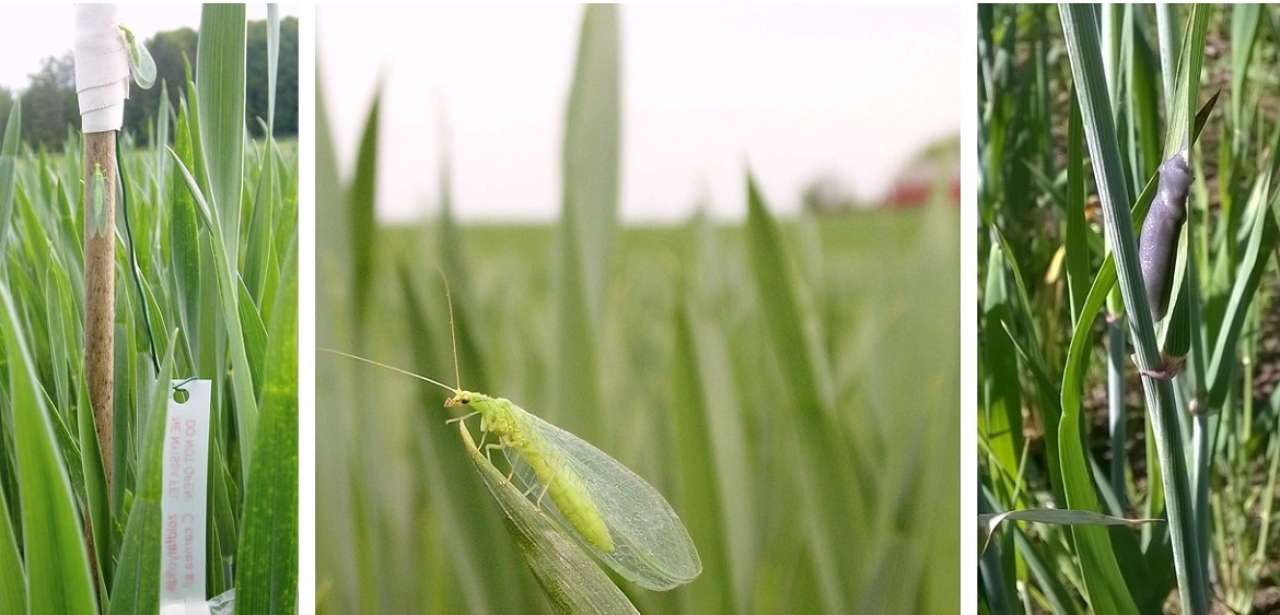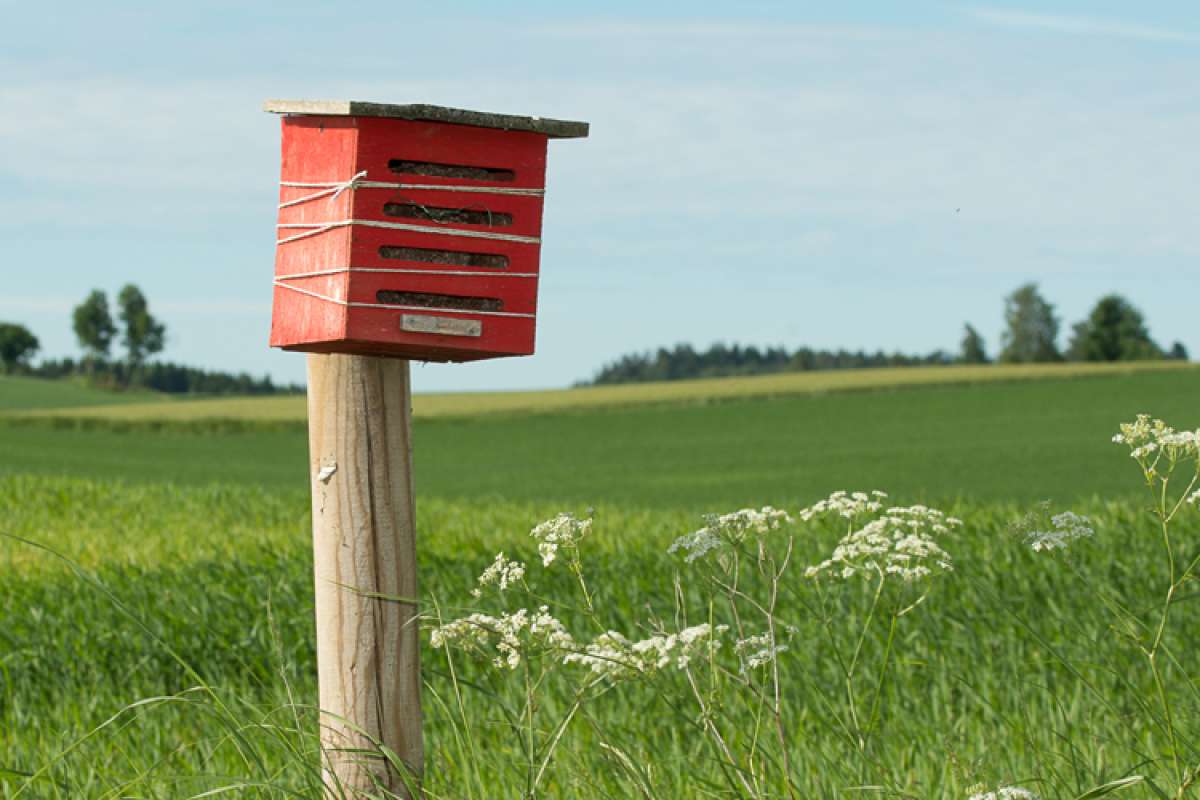Tilrettelegging for nytteinsekter ved bruk av biologisk mangfold og luktstoffer

Gulløye Chrysoperla carnae s.l. (midten) er et viktig nytteinsekt i biologisk plantevern. Luktdispenser (venstre) og luktpasta (høyre) med planteluktstoffer som tiltrekker gulløyer og dermed gir økt bladlusbekjempelse i korn.
Foto: Gunda Thöming
Et rikt naturmangfold er forutsetningen for gode leveområder for insekter og er dermed nøkkelen til gode økosystemtjenester, slik som biologisk skadedyrbekjempelse. Nyere forskning viser at i tillegg til å skaffe godt habitat for nyttedyrene kan planteluktstoffer brukes for en mer fokusert skadedyrkontroll ved hjelp av nytteinsekter.
I Norge finnes det gode muligheter for å tilrettelegge landbruksarealene våre slik at vi støtter og hjelper de nyttige insektene. Vi må sørge for gode leveområder med tilgang på mat, beskyttelse og overvintringsplasser for nytteinsekter i jordbrukslandskapet. Da får vi nytteinsekter som bidrar vesentlig til skadedyrbekjempelse og dermed redusert behov for kjemiske plantevernmidler.
Gulløye
I samarbeid med engasjerte kornprodusenter har vi etablert en plantevernstrategi hvor planteluktstoffer, blomsterrike åkerkanter og tilrettelagte overvintringsplasser kombineres for å fremme gulløye, et viktig nytteinsekt.
Gulløye er et viktig naturlig forekommende nyttedyr mot for eksempel bladlus. Insekter som gulløyer har svært god luktesans.
Internasjonalt samarbeid
I samarbeid med forskere i Ungarn har vi utviklet et luktstoff som tiltrekker gulløye, øker dens reproduksjon og dermed fremmer biologisk bekjempelse av skadedyr. Det nyutviklede luktstoffet imiterer lukten fra planter som blir angrepet av skadedyr.
Planter bruker luktstoffer som SOS-signal og gulløyer anvender disse luktstoffene for å finne en optimal plass for egglegging. Sammen med luktstoffindustri i USA og forskere i Sverige har vi utviklet og testet en biologisk nedbrytbar luktpasta for bekjempelse av bladlus.
Etter 4 år med feltforsøk i korn viser det seg at en plantevernstrategi med planteluktstoffer, blomstrende åkerkant og overvintringsplasser for gulløyene, fremmer biologisk bekjempelse av bladlus. Mengden av gulløyer øker og antall bladlus holdes under økonomisk skadeterskel. Dermed kan bruken av kjemiske plantevernmidler reduseres.
KONTAKTPERSON

Gunda Thöming
Forsker
-
Divisjon for bioteknologi og plantehelse
(+47) 920 11 307 gunda.thoeming@nibio.no Kontorsted: Ås - Bygg H7
Publikasjoner
Sammendrag
Det er ikke registrert sammendrag
Forfattere
Gunda ThömingSammendrag
Det er ikke registrert sammendrag
Sammendrag
Det er ikke registrert sammendrag
Sammendrag
Det er ikke registrert sammendrag

